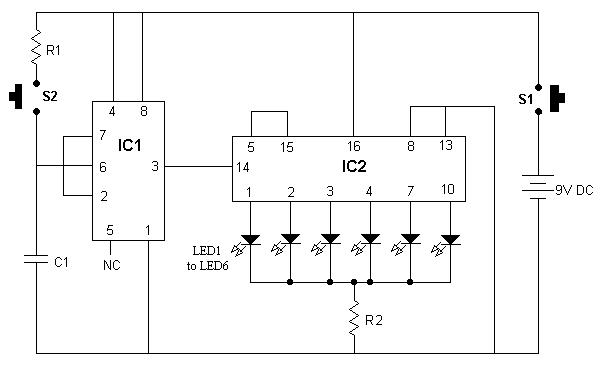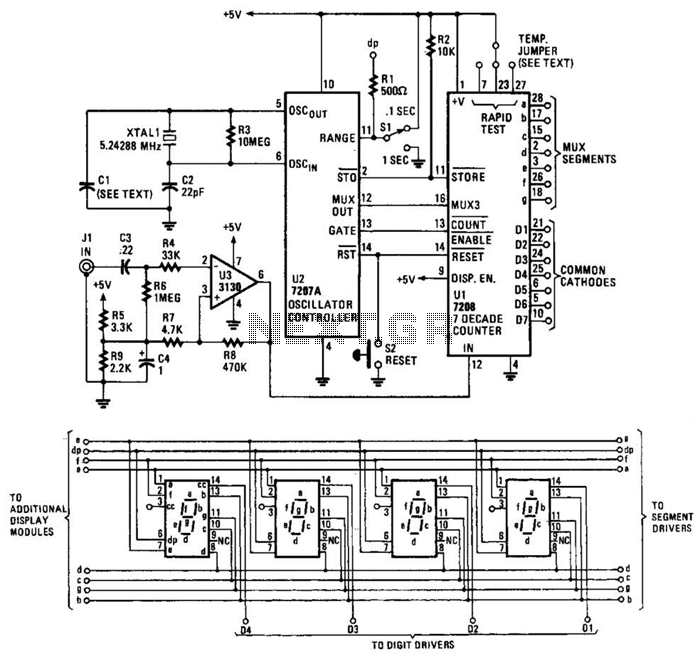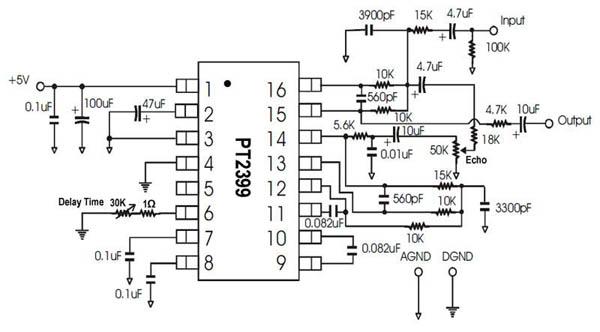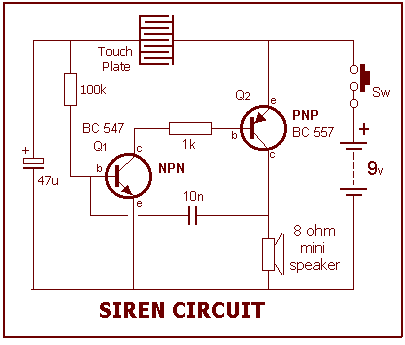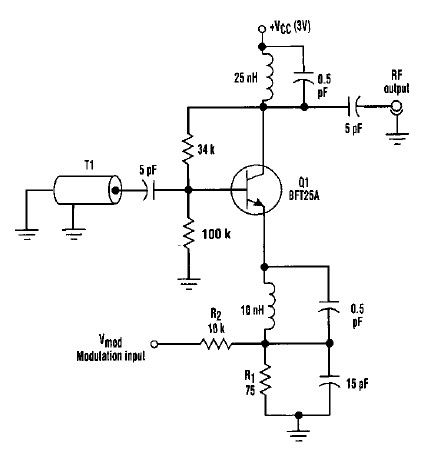
Electronic Doorbell with Counter
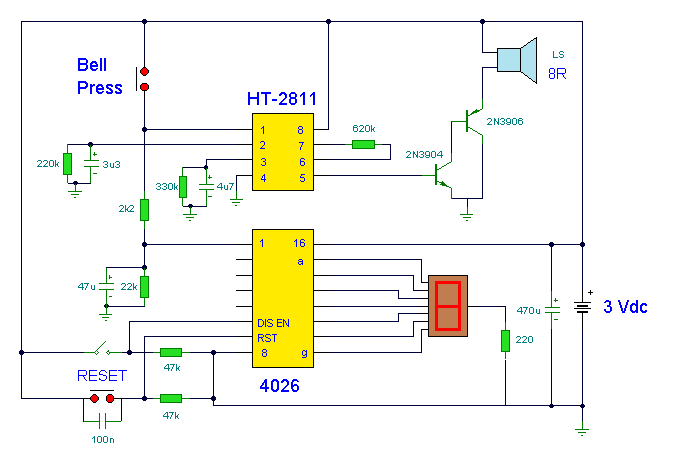
This circuit utilizes a synthesized sound chip from Holtek, the HT-2811, which reproduces the sound of a "ding-dong" chiming doorbell. Furthermore, the circuit incorporates a CMOS 4026 counter display driver IC to count visitors.
The circuit design features the HT-2811 sound chip, which is responsible for generating the doorbell sound. This chip is programmed to produce a specific waveform that mimics the "ding-dong" chime, providing an audible alert for visitors. The HT-2811 operates on a low voltage supply, typically between 3V to 5V, making it suitable for battery-powered applications.
The CMOS 4026 integrated circuit serves as a display driver for a seven-segment LED display, allowing for the visual representation of the number of visitors. The 4026 can drive up to ten segments, making it ideal for counting purposes. It takes input from a simple push-button switch or a sensor that triggers when a visitor arrives. Each time the button is pressed or the sensor is activated, the 4026 increments the count displayed on the LED.
The circuit can be powered by a standard power supply or batteries, depending on the application requirements. Proper decoupling capacitors should be included near the power pins of both the HT-2811 and the 4026 to ensure stable operation and to minimize noise. Additionally, resistors may be required to limit current to the LED segments to prevent damage.
For enhanced functionality, the circuit can be designed to include a reset button that allows the user to clear the visitor count. This can be implemented using a simple switch connected to the reset pin of the 4026.
Overall, this circuit provides a practical solution for a doorbell system that not only alerts the homeowner with sound but also keeps track of the number of visitors, enhancing the functionality of traditional doorbell systems.This circuit uses a synthesized sound chip from Holtek, the HT-2811. This reproduces the sound of a ""ding-dong"" chiming doorbell. Additionally, the circuit includes a CMOS 4026 counter display driver IC to count your visitors.. 🔗 External reference
The circuit design features the HT-2811 sound chip, which is responsible for generating the doorbell sound. This chip is programmed to produce a specific waveform that mimics the "ding-dong" chime, providing an audible alert for visitors. The HT-2811 operates on a low voltage supply, typically between 3V to 5V, making it suitable for battery-powered applications.
The CMOS 4026 integrated circuit serves as a display driver for a seven-segment LED display, allowing for the visual representation of the number of visitors. The 4026 can drive up to ten segments, making it ideal for counting purposes. It takes input from a simple push-button switch or a sensor that triggers when a visitor arrives. Each time the button is pressed or the sensor is activated, the 4026 increments the count displayed on the LED.
The circuit can be powered by a standard power supply or batteries, depending on the application requirements. Proper decoupling capacitors should be included near the power pins of both the HT-2811 and the 4026 to ensure stable operation and to minimize noise. Additionally, resistors may be required to limit current to the LED segments to prevent damage.
For enhanced functionality, the circuit can be designed to include a reset button that allows the user to clear the visitor count. This can be implemented using a simple switch connected to the reset pin of the 4026.
Overall, this circuit provides a practical solution for a doorbell system that not only alerts the homeowner with sound but also keeps track of the number of visitors, enhancing the functionality of traditional doorbell systems.This circuit uses a synthesized sound chip from Holtek, the HT-2811. This reproduces the sound of a ""ding-dong"" chiming doorbell. Additionally, the circuit includes a CMOS 4026 counter display driver IC to count your visitors.. 🔗 External reference
